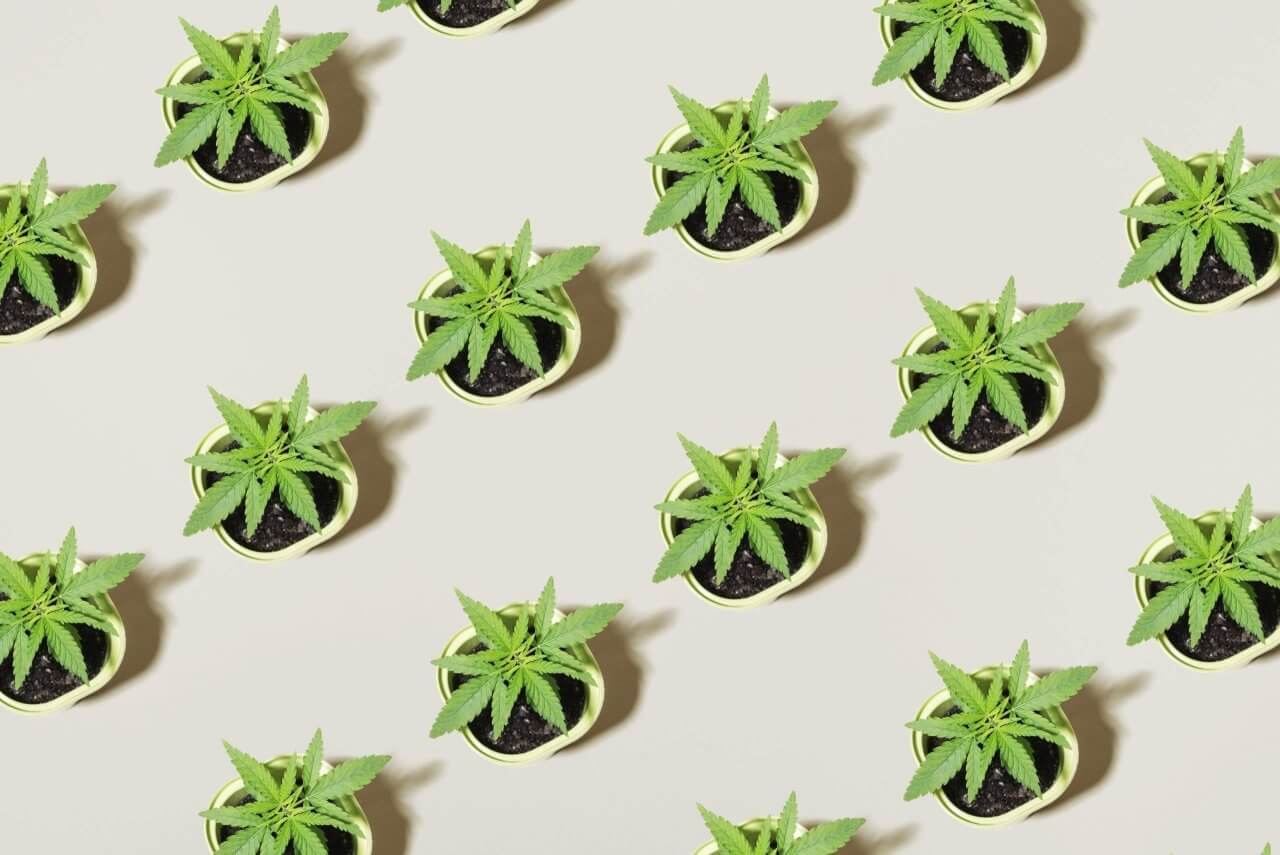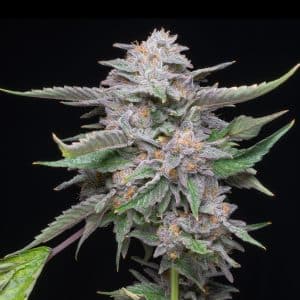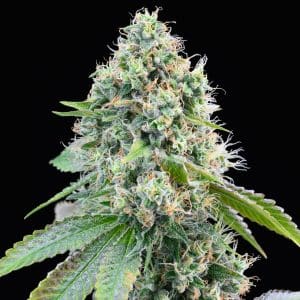Free Khalifa Mints seeds on orders over $150!

An autoflower grow might seem difficult for those unfamiliar. That’s because growing autoflowers is a little different from growing fems and regs. Cannabis cultivators must learn to expect different growth patterns and potentially different yields when growing autoflowers.
Autoflowering cannabis plants develop and blossom quickly. Also, autoflower cannabis differs from regular cannabis plants in that they flower without the need for particular lighting schedules. To flower, regular cannabis requires a 12-hour light and 12-hour darkness cycle. The plant usually starts flowering when the air becomes colder, and there is less darkness than daylight. Autoflowering seeds flower in 8-10 weeks. Autoflower plants are becoming increasingly popular among growers because they are relatively easy to maintain and have a wealth of information on how to better care for them.
Autoflower life cycle, weekly cultivation method guide:
When growing cannabis outdoors, the ‘natural world’ takes care of the sunlight, soil, ventilation, and even most watering.
Germination usually takes 3-10days, but in some cases, the germination period may take 10-12days. To begin the germination process, you must first create an appropriate soil mix. Autoflowers require fewer nutrients than day-long and enjoy light, airy soil; therefore, it is crucial to add the necessary nutrients. Make a 10-15 mm hole in the earth once the seeds have germinated. Fill the holes with seeds and lightly cover them with dirt. Seedlings will emerge in the next few days—optimal environmental conditions greatly aid germination.
Before the vegetative process starts, the seedling phase happens around two weeks. It is time to transfer your plant once you have transferred it into a larger container and the roots and foliage are spreading fast.
This phase is when your plants will thrive the most. Your plants could now benefit substantially from suitable training procedures such as low-stress training.
The plant reaches the start of the flowering phase during the fourth week. This week’s activities include modest training tweaks and blossoming preparations.
Your autoflowering plants will produce significant flower clusters. The flowering stage usually lasts 7-12 weeks.
At week 6, flowers will be blooming at each bud site. Reduce the humidity slightly in week 6 to reduce the risk of mold.
Week seven’s goal is to maintain. Allowing humidity levels to become too high can lead to mold problems. Inspect for pests like thrips and spider mites regularly with a magnifying lens.
It would be best to begin washing the plants at the beginning of the eighth week. Fill the soil as much as possible with water and wait to drain. Trim any dead leaves or lower branches that are not receiving enough light.
Your commitment and hard effort will soon be rewarded with delicious resin sprouts. The leaves start to turn yellow and may fall off. This indicates that you effectively swept your plants away.
The ideal time to harvest outdoors varies depending on the garden. The optimal time to reap is when the majority of the trichomes have turned color from crystal to amber.
Germination of natural autoflower cannabis is simple. Place your autoflower cannabis seed in a wet potting mix that is 2 to 3 times the seed’s width. That little plant will send its tap root down into the ground, and its seed will try to find light via its leaves.
Your seedling has now sprouted, and the photosynthesis process has begun. A 250W LED bulb will be sufficient to power an indoor grow. You’ll be able to cultivate one huge plant per square meter with this setup.
Apply LST (Low-Stress Training) when growing cannabis indoors at three weeks to increase flowering productivity. Your autoflower will already be in the growing process at this stage. New fan leaves will appear, which will increase photosynthesis.
The plant reaches the start of the flowering phase during the fourth week. This week’s activities include modest training tweaks and blossoming preparations.
Practically all cannabis plants last eight weeks to flower. The length of time varies by cannabis strain, with weeks ranging from 7 to 12 weeks.
Autoflower cannabis grows in each bud spot during this time of year. Limit the humidity a little in the sixth week to lower the risk of mold.
Maintenance is the goal for the seventh week. Concentrate your time and attention on bringing the glow room back into balance.
It would help to wash the plants at the beginning of the eighth week. Fill the soil as much as possible with water and wait to drain. Trim any dead leaves or lower branches that are not receiving enough light.
Before harvesting, you should stop giving your plants nutrients and instead feed them pH-controlled water. This is done to ensure that the nutrients available create excellent buds.
Determining when to harvest cannabis indoors is crucial. When you harvest too soon, you may miss out on some essential last-minute cannabinoid production and yield. If you harvest indoor cannabis too late, the impacts of the cannabis may be too ‘heavy.’
Generally, autoflowering cannabis cultivators do not need to manually set the lighting length to 18 hours during the developing stage before dropping it to 12 hours during flowering.

Because of its genetic nature, this cannabis blooms on its own. Autoflowering cannabis requires different lighting and intensities at varying times than photoperiod cannabis. Because the growing period is so brief, it’s critical to make the most of it and maximize the plants’ growth. In general, autoflowers benefit from somewhere between 18 and 22 hours of artificial light every day.
The optimal PH for autoflowering cannabis plants is between 6.2-6.5 in soil and 5.5- 6.1 in hydroponics; however, a slight difference won’t hurt the plant too much. Everything that the plant will come into touch with must be within this particular PH range, and you should test each element with the PH meter to check if all things are working in order.
There is a diversity of autoflower seeds available, each with a different cannabinoid content. That is to say; you will almost certainly discover what you are looking for. Not only do the greatest autoflowering cannabis strains let you swiftly and effectively turn around premium cannabis, but they also blossom with age rather than shifting life cycles. You can obtain many harvests each year – even if you’re growing outside – because the best high yield autoflowering cannabis seeds can complete their life cycles in as little as nine weeks from seed, or 60-73 days on average. And if you cultivate cannabis indoors, the outcomes will be even better.
White Widow autoflower is a breed between a South Indian Indica and a Brazilian Sativa landrace strain that thrives on soil and hydroponic environments. This Autoflower thrives in mild, temperate climates with cooling temperatures. Expect this cannabis to grow to roughly 50 cm when planted indoors, with some larger examples reaching up to 100 cm.
Best Selling Cannabis Seeds





Offers
Information
Get the best from your plants
Growing At Home
Growing At Home
Grow stages
THCA/D9 (out of stock)
Troubleshooting
This product is not for use by or sale to persons under the age of 18. This product should be used only as directed on the label. It should not be used if you are pregnant or nursing. Consult with a physician before use if you have a serious medical condition or use prescription medications. A doctor’s advice should be sought before using any hemp products. All trademarks and copyrights are property of their respective owners and not affiliated with nor do they endorse this product. These statements have not been evaluated by the FDA. This product is not intended to diagnose, treat, cure or prevent any disease. By using this site you agree to follow the Privacy Policy and all Terms & Conditions printed on this site. All products contain less than 0.3% Cannabinoid-compliant with applicable Federal Laws. Please make yourself aware of any and all applicable laws regarding hemp in your jurisdiction. Premium Cultivars accepts no liability or responsibility regarding germination laws in any specific locale state or national jurisdictions.THCA products are not available for shipment to the following states: Hawaii, Idaho, Minnesota, Oregon, Rhode Island, Utah, Vermont *Note: Products with Total THC content above 0.3% must not be shipped to these states.
We want to help you get your hands on the seeds you want, take 20% off your next purchase when you enter your email below!
We want to help you get your hands on the seeds you want, take 20% off your next purchase when you enter your email below!